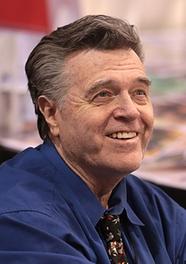 |
|
| Neal Adams | |
Neal Adams, a leading comic book artist "who brought a visceral realism to his depictions of superheroes, notably helping to revitalize Batman by giving him a darker image and new adversaries, while also championing the rights of comic book creators," died April 28, the New York Times reported. He was 80.
"He was a master at every facet of art--his range of expressions, the dramatic use of lighting and shadowing, the seemingly facile command of anatomy and, of course, the trademark finger-pointed-in-your-face foreshortening was all just unbelievably next level," Jim Lee, CCO and publisher of DC Comics, observed in an Instagram post.
Some of Adams's most well-regarded work resulted from his partnership with the writer Denny O'Neil. The Times wrote that in 1969, they "began to restore Batman to a brooding vigilante, as he was originally conceived.... The two also collaborated from 1970 to 1972 on the Green Lantern/Green Arrow series, in which the title heroes, who were friends out of costume, traveled across the country in stories about drug abuse, racism, corporate greed and poverty." During this period, Adams and O'Neil also introduced John Stewart, the first Black Green Lantern. Adams made his way back to Batman in 2011 when he wrote and drew Batman: Odyssey, a seven-part series.
Adams was also on the front lines in challenging comic book publishers to safeguard the rights of creators, the Times noted. "Neal was an agitator," said Paul Levitz, a former president of DC Comics, noting that Adams "was the only star talent to stand up" when "the major talents were desperately afraid of the great power of the publishing houses.... Neal was the loud voice of justice."
Neil Gaiman tweeted: "Neal Adams is gone. He was the reason I drew Batman in every school exercise book. He reinvented the look of comics pages and characters, made me care about comics at the point where I didn't care any more, and I wish I'd been lucky enough to write a story he drew."
"He came in applying hyper-realism, and bringing that to comics, his work felt like you were watching stills from a movie that he illustrated really well. He made it look like you could believe that this could almost happen," comic book historian Alex Grand told NPR. "He really put himself out there to try and create unions for comic book artists and writers to allow better health care, pay, return of their original art. He was a superhero himself in that sense, that he could actually go to bat for the weaker people, and that's something different."

